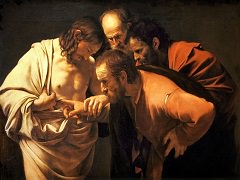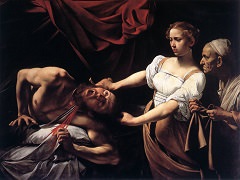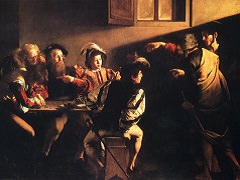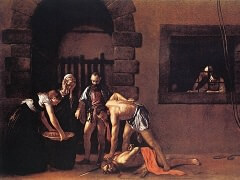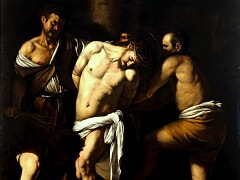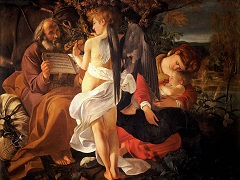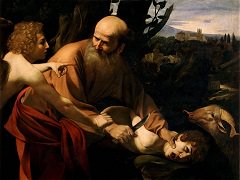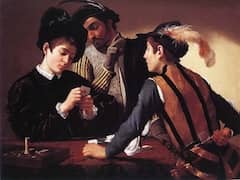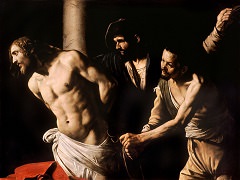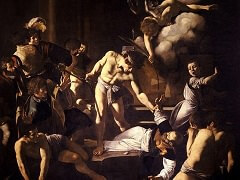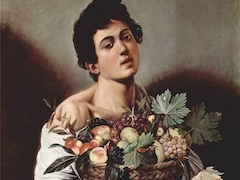Crucifixion of Saint Peter, 1601, by Caravaggio
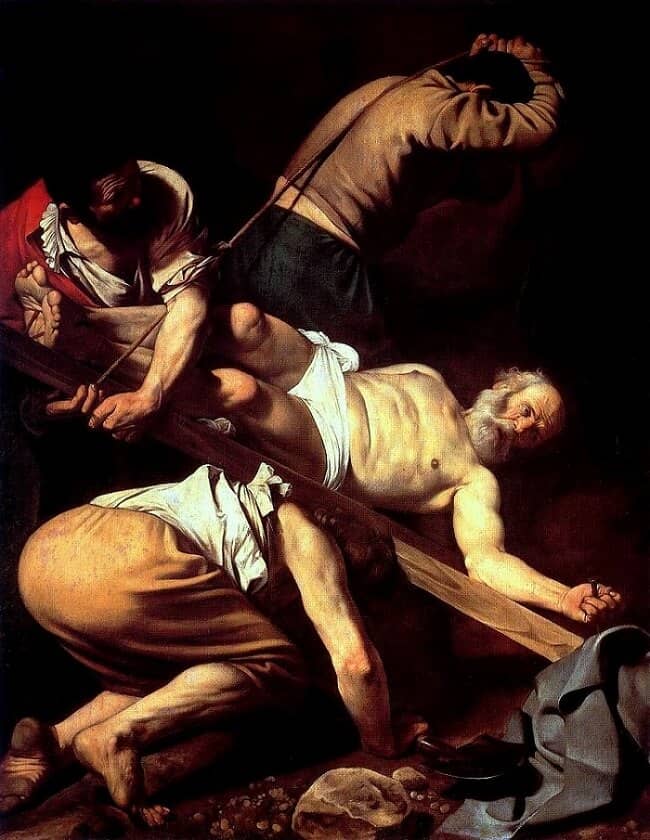
Both of Caravaggio's paintings in the Cerasi Chapel are in marked contrast to the chapel's altarpiece by Annibale Carracci. This is in part due to the fact that both painters paid
attention to the location of their pictures when formulating the design, so that whereas Annibale's composition is frontal, Caravaggio, whose compositions were for the lateral walls,
attempted to lure the spectator's eye into the pictures along diagonal lines of recession. But it also seems probable that the two most famous painters of the younger generation in
Rome treated their joint commission as something of a competition, with the result that they both chose to emphasize those aspects of their respective styles with which they wished to
be associated: Annibale, with his pale precious colours and firm outlines, became more 'classical' than ever, whereas Caravaggio, eager to assert, as he did at the Baglione libel trial in 1603,
that a good painter is someone 'who knows how to paint well and imitate well natural things', chose to stress details such as the executioner's dirty feet and the beautifully polished and
foreshortened spade together with the powerfully expressive facial features of St. Peter.
It is worth noting that Caravaggio's handling in the two Cerasi pictures is subtler and more masterly than in the Contarelli works, and that colour plays an important role in
leading the eye from one picture to the other; especially significant is the harmonious contrast between the two cloths at the far end of either of Caravaggio's pictures- grey
in The Crucifixion of St. Peter, bright pink in The Conversion of Saul. Some attempts have been made to identify the lost first version of The Crucifixion of St. Peter, referred to by
Baglione, with a painting in the Hermitage, Leningrad, but even the view that this represents a copy, or partial copy, of the lost original is not altogether convincing.

